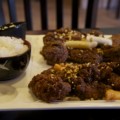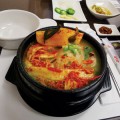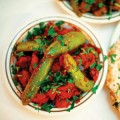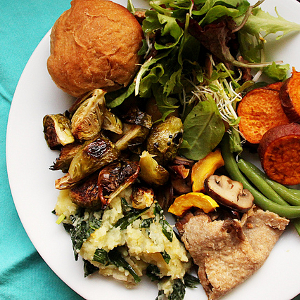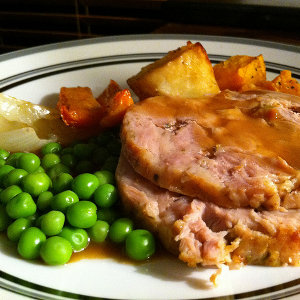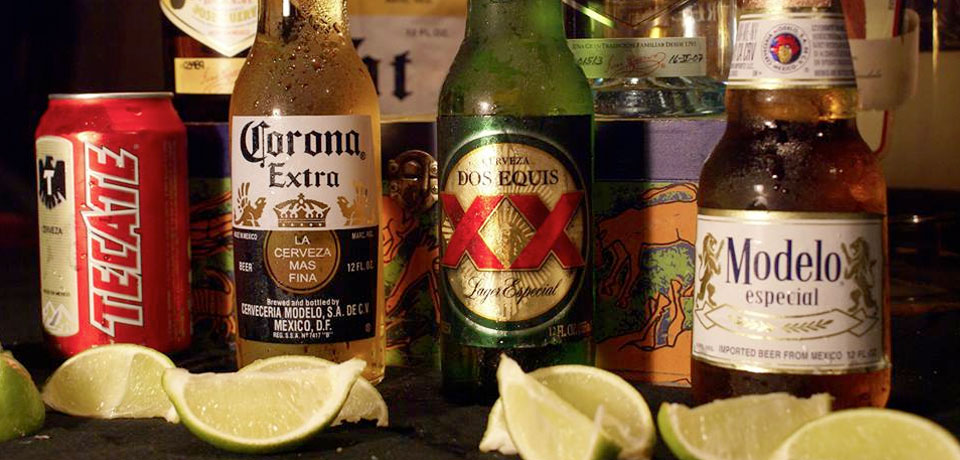Dave Schaub understands that his customers have never been better informed about what they’re putting into their bodies. That’s why the fourth-generation butcher and owner of Schaub’s Meat, Fish & Poultry in the Stanford Shopping Center says he’s been buying Pitman Farms’ chicken for almost three years.
“The thing about people today is they’re very educated about their food,” Schaub says. “They’re well traveled and they read and research this stuff.”
He says his mom-and-pop shop of 23 years appreciates the way the Sanger-based chicken processing plant does things.
“They have a great reputation for the way they raise their animals,” he says.
Mary Pitman fidgets when she enters the area of her processing plant where the chickens are killed. She prefers “processed” or even “put to sleep”—anything other than a word relating to death.
“I’ve never liked the way it’s been done,” says the owner and namesake of Pitman Family Farms, whose products include Mary’s chickens, turkeys and ducks. Her fidgeting is, in a way, part of what has led the company to invest millions of dollars in a PETA-endorsed method for ending the birds’ lives.
On the surface, it may seem strange that People for the Ethical Treatment of Animals—which believes the world’s population should refrain from harming animals in any way and eat only vegan diets—would advocate a method for the delivery of a living animal to a dinner plate. But, as PETA media specialist Ashley Gonzalez says, “We want to eliminate the worst suffering chickens are enduring right now. They’re going to be killed, and if we can do it in a less cruel way, companies should be doing it.”
The process Pitman will begin using next month is the second of its kind in the United States, and the first west of the Mississippi. The Anglia Autoflow CAS (controlled atmosphere stunning) procedure is as far a cry from current slaughter methods as one can get with the end result still being a dead bird.
Currently, the most popular method involves hanging birds by their feet on hooks, which carry them by conveyor belt to an electrified water bath, then individually prodding each bird (by hand) with a high-voltage barbecue fork to ensure a lifeless entry to the packaging facility. Even then, according to PETA, some are still alive when their throats are slit.
The CAS method involves no hanging, no bath, no prodding. Birds are loaded into a large crate and taken by conveyor into a “gas tunnel,” where carbon dioxide gas replaces oxygen and puts the birds to sleep in 60 to 70 seconds. “It’s far more humane than what happens to birds now,” said Gonzalez. “With these new systems, it eliminates the chance for a chicken to be scalded to death.”
Not every free-range processing plant is on board with the PETA-endorsed killing method.
{pagebreak}
“You are messing with gases and you have employees exposed to that situation,” says Andrew Carlson, CEO of Fulton Valley Farms in Sonoma. “If done perfectly, yes, it’s good. But like any business you have to calculate the times that it’s not going to be done with perfection.”
Fulton Valley Farms, which is distributed in Whole Foods Markets under the Field to Family label, does gas its turkeys, because the size of the bird can make electrocution awkward and painful. But Carlson says chickens are far easier to handle, making’s PETA’s method more burdensome than necessary.
Yasmin Tyebjee, owner of Top Nosh Cafe in San Jose, says she isn’t so concerned with processing methods as long as the chicken and eggs for her British-style meat pies are free-range.
“I wanted a clean product and I wanted my customers to have food that I would eat or my family would eat,” says Tyebjee, whose pies are also sold by small local grocers such as Andronico’s, Lunardi’s and Zannato’s.
Like Fulton Valley’s, Pitman Farms’ birds are raised to above-required government standards for free-range chickens. One of Pitman’s farms in the Central Valley allows its birds to leave the spacious, temperature-regulated coop and has branches of eucalyptus hung from the ceiling to just above the birds’ heads and hay bales for them to play on.
The resulting bird looks like a normal chicken—an unusual sight in the poultry-processing business. Many chickens, including Petaluma Poultry’s Rocky Jr., lack enough feathers to safely go outside the coop before they are slaughtered. Birds at Pitman’s farm are more sparsely covered than an average bird, but are still able to roam free.
The birds are in such high demand, says Geoff Green, Pitman Farms marketing specialist, that the company sometimes has to turn away orders. Despite their $6 per-pound price tag in stores, it’s tough to keep up with demand, he said. Currently, about a thousand birds a week can be produced for sale using this method, but expansion plans are imminent.
If Mary’s vision catches on—and the popularity of the company’s most humanely raised (and most expensive) products indicate it’s possible—the birds we eat will soon be treated more like humans than some house pets. If it remains a niche market, however, natural poultry producers may end up fighting for market share.
Mary’s Chicken will soon be the primary option, and one of just two brands of chicken available in California Whole Foods markets.
“We’re aligning with smaller-scale California producers as a way to secure and expand our supply,” explains Whole Foods’ meat buyer Dan Neuerbrug.
Like Mary’s chickens, birds at Fulton Valley Farms are given outdoor access, fed a vegetarian diet and live in coops with enriched growing conditions.
The long-term viability of Mary’s chickens will rely upon consumer demand, which hinges on product quality. Slick marketing and warm, fuzzy feelings only go so far in the culinary world, where the bottom line boils down to taste. If raising an animal with compassion makes it taste better, it’s a safe bet that those in charge of the large factory farms will take another look at how things are done.
“Chefs out there want nothing but the best,” says Green, whose job is to convince chefs to spend a little more on his birds. “But there are some who believe chicken is chicken and it’s not worth the price.”
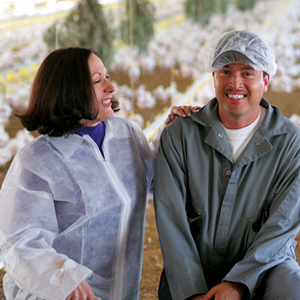
 Food & Wine Events: June 1-8
Food & Wine Events: June 1-8  Branching Out
Branching Out 
